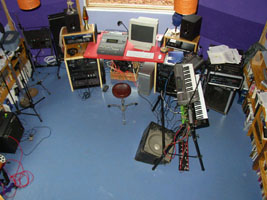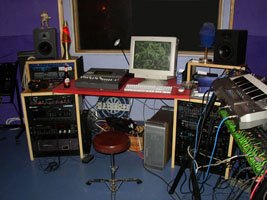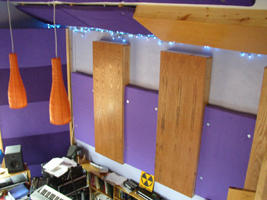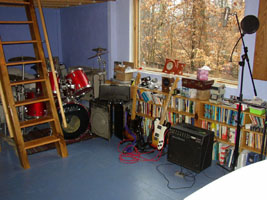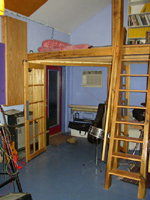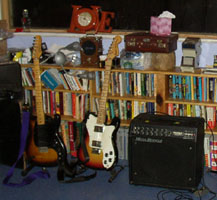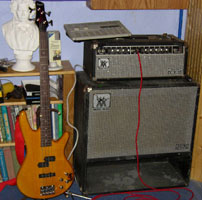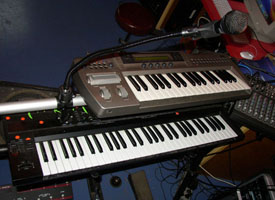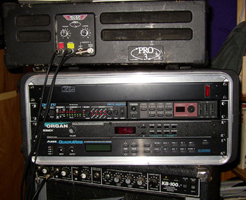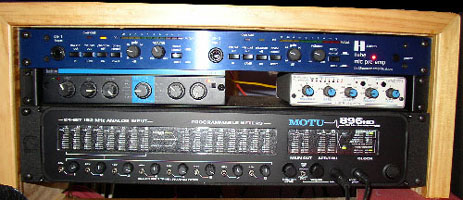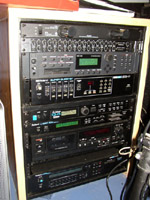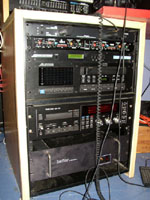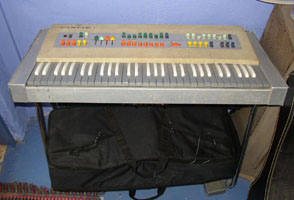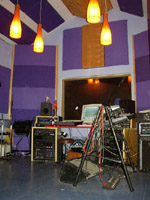
The money shot. A view from the entry way. Note the high ceilings, at the apex of which, you can see the curved diffusor/bass trap. The purple panels are OC703 high density insulation. The corner panels (alternating shades of purple) are angled from the walls to serve as bass traps. These corner panels are 4" thick with a void up to 2 feet in depth. The other purple panels are 2" thick and held off the walls with 2X2s, to lower the effective absorption frequency.
See the construction page for details.
